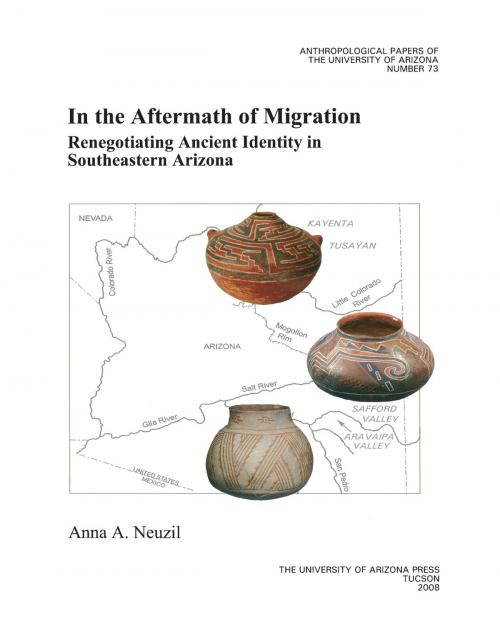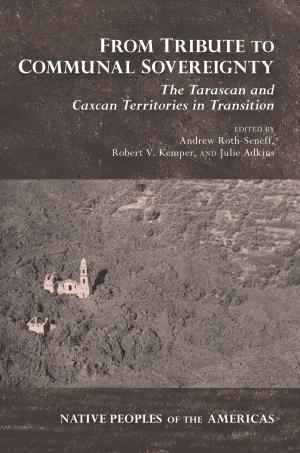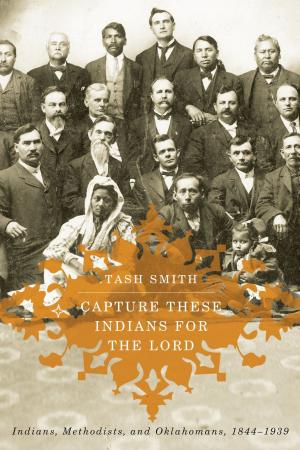In the Aftermath of Migration
Renegotiating Ancient Identity in Southeastern Arizona
Nonfiction, Social & Cultural Studies, Social Science, Archaeology| Author: | Anna A. Neuzil | ISBN: | 9780816536818 |
| Publisher: | University of Arizona Press | Publication: | December 15, 2016 |
| Imprint: | University of Arizona Press | Language: | English |
| Author: | Anna A. Neuzil |
| ISBN: | 9780816536818 |
| Publisher: | University of Arizona Press |
| Publication: | December 15, 2016 |
| Imprint: | University of Arizona Press |
| Language: | English |
The Safford and Aravaipa valleys of Arizona have always lingered in the wings of Southwestern archaeology, away from the spotlight held by the more thoroughly studied Tucson and Phoenix Basins, the Mogollon Rim area, and the Colorado Plateau. Yet these two valleys hold intriguing clues to understanding the social processes, particularly migration and the interaction it engenders, that led to the coalescence of ancient populations throughout the Greater Southwest in the fourteenth and fifteenth centuries A.D. Because the Safford and Aravaipa valleys show cultural influences from diverse areas of the pre-Hispanic Southwest, particularly the Phoenix Basin, the Mogollon Rim, and the Kayenta and Tusayan region, they serve as a microcosm of many of the social changes that occurred in other areas of the Southwest during this time.
This research explores the social changes that took place in the Safford and Aravaipa valleys during the thirteenth through the fifteenth centuries A.D. as a result of an influx of migrants from the Kayenta and Tusayan regions of northeastern Arizona. Focusing on domestic architecture and ceramics, the author evaluates how migration affects the expression of identity of both migrant and indigenous populations in the Safford and Aravaipa valleys and provides a model for research in other areas where migration played an important role.
Archaeologists interested in the Greater Southwest will find a wealth of information on these little-known valleys that provides contextualization for this important and intriguing time period, and those interested in migration in the ancient past will find a useful case study that goes beyond identifying incidents of migration to understanding its long-lasting implications for both migrants and the local people they impacted.
The Safford and Aravaipa valleys of Arizona have always lingered in the wings of Southwestern archaeology, away from the spotlight held by the more thoroughly studied Tucson and Phoenix Basins, the Mogollon Rim area, and the Colorado Plateau. Yet these two valleys hold intriguing clues to understanding the social processes, particularly migration and the interaction it engenders, that led to the coalescence of ancient populations throughout the Greater Southwest in the fourteenth and fifteenth centuries A.D. Because the Safford and Aravaipa valleys show cultural influences from diverse areas of the pre-Hispanic Southwest, particularly the Phoenix Basin, the Mogollon Rim, and the Kayenta and Tusayan region, they serve as a microcosm of many of the social changes that occurred in other areas of the Southwest during this time.
This research explores the social changes that took place in the Safford and Aravaipa valleys during the thirteenth through the fifteenth centuries A.D. as a result of an influx of migrants from the Kayenta and Tusayan regions of northeastern Arizona. Focusing on domestic architecture and ceramics, the author evaluates how migration affects the expression of identity of both migrant and indigenous populations in the Safford and Aravaipa valleys and provides a model for research in other areas where migration played an important role.
Archaeologists interested in the Greater Southwest will find a wealth of information on these little-known valleys that provides contextualization for this important and intriguing time period, and those interested in migration in the ancient past will find a useful case study that goes beyond identifying incidents of migration to understanding its long-lasting implications for both migrants and the local people they impacted.















